Today is Earth Day 2021: the 51st year for Earth Day. It was founded on April 22, 1970, by Senator Gaylord Nelson of Wisconsin. He was inspired by student protests against the Vietnam War and hoped to inspire a similar outcry against our war on the environment.
It might not be an official national holiday, but it’s an important day to all the Eco-Warriors at Good Earth Plant Company and important for us to call it to every reader’s attention.
It’s easy to get discouraged about climate change and global warming and easy to feel powerless about stopping it. But it’s possible if we all add a little effort, which will add up to a lot if we don’t give up.
One of the simplest, most effective ways to fight climate change is the reason for our mission at Good Earth Plant Company: grow plants! Gardening helps the planet in multiple ways, especially if you lose the big suburban lawn, the leaf blowers, and the pesticides. Get inspired and celebrate Earth Day 2021 with these tips.
Get Growing
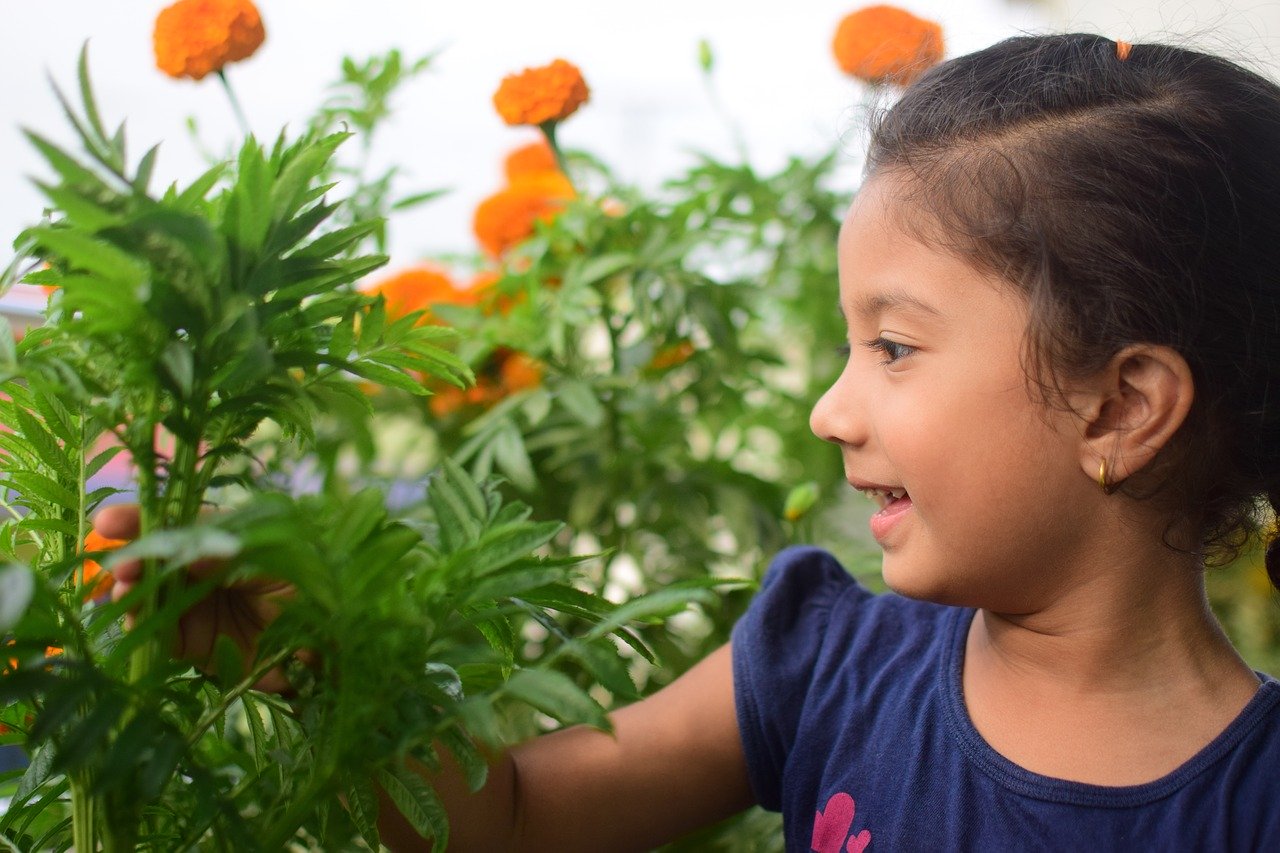
Kids learn about nature when they watch plants grow. Photo: Prashant Sharma/Pixabay
Growing plants of any kind prevents global warming by preventing carbon dioxide from entering the atmosphere. Plants consume carbon dioxide during photosynthesis, turn it into sugar for fuel, and produce oxygen in return. It gets stored forever in their stems and roots. Eventually, it becomes decayed material fertilizing the soil. It’s about the best deal in the world.
The most efficient way to take carbon dioxide out of the air is by planting trees. But long-lived shrubs, ornamental grasses, and some perennial flowers also do a good job. It really doesn’t matter what you plant. Just dig in!
Go Native
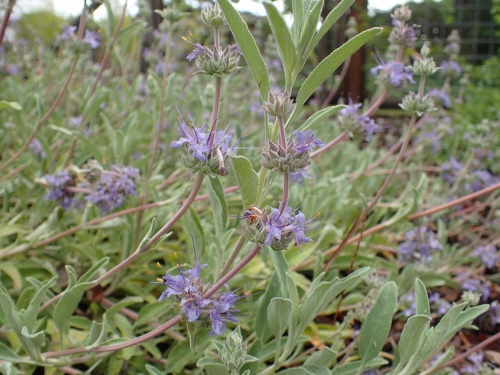
“Bee’s Bliss” Salvia (Safe) is one example of pretty native plants you can use in your landscaping. Photo: California Native Plant Society
Focus on growing native plants. First, they’re the best-suited choices for their specific climate, like the dry Mediterranean climate in San Diego County and Southern California. When you plant non-natives that need more water, or invasive plants capable of taking over the native plants, you end up wasting resources or worse, using chemicals to get rid of your mistakes later. When you pull out any plant by the roots, you release carbon. Remember what we just wrote about plants storing carbon?
Native plants also increase and preserve biodiversity. Rely on your local garden center for native plant choices, or seek out advice from resources like the San Diego Botanic Garden or Water Conservation Garden. Their experts love to share advice with you. You can also search for native plants in your area on the Audubon Society’s Native Plant Database.
Go Compost Crazy
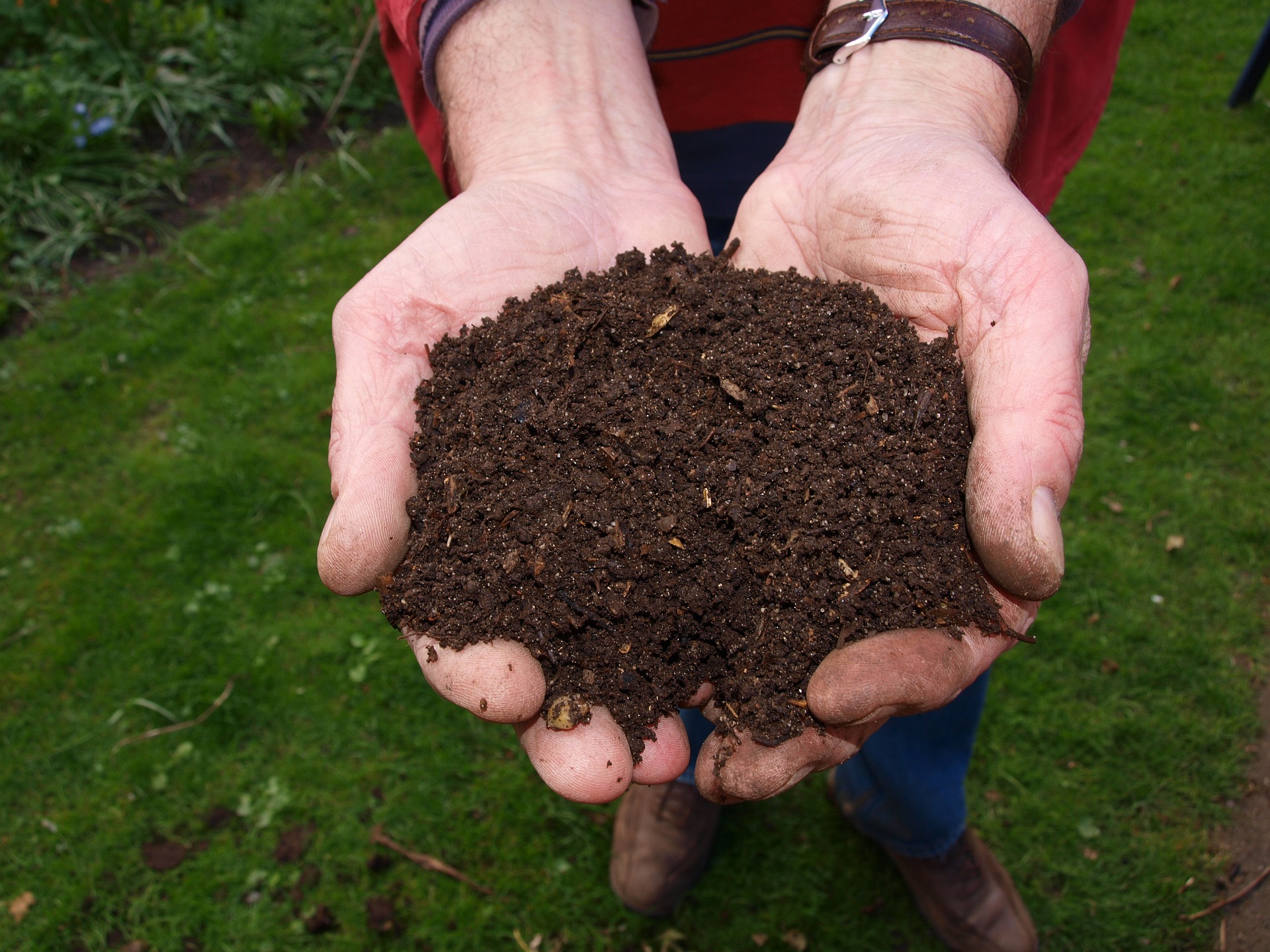
Compost for your Mother (Earth). Photo: Joke Van Der Leij / Pixabay
Stop carbon dioxide in its track by making compost. Composting is the process of collecting decomposing organic matter, which can be added to your soil to help your plants grow. Compost presents your kitchen and garden waste from reaching our landfills where they produce methane gas, a greenhouse gas 25 times more destructive to the atmosphere than carbon dioxide. Compost increases the biological activity and water retention capacity of your soil.
If you are new to composting and feel squeamish about rotting stuff at home, do a little research and get the right supplies. When it’s done right, there is no smell and doesn’t attract pests, no more than your normal trash. Composting breaks the original materials down faster than you think, and you’ll have rich fertilizer in no time.
Layer Your Soil and Leave It Alone
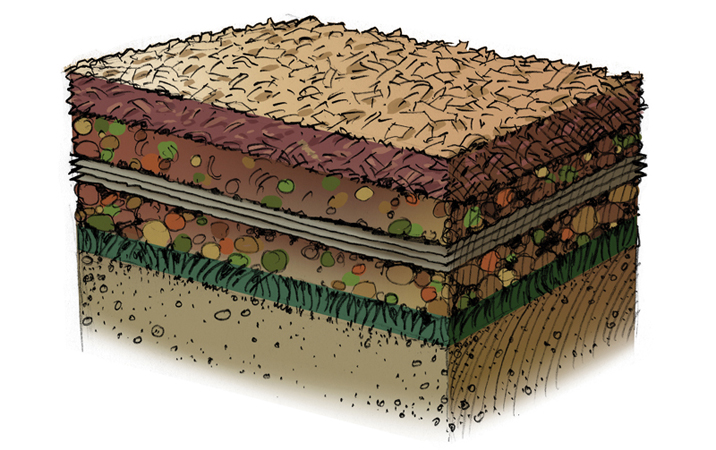
This diagram demonstrates the sheet lasagna approach to layering your soil.
People used to think rototilling their soil was a good idea. Not anymore. When you turn over the soil, you release all the carbon stored in plant roots, along with bacteria and decomposing plant materials. The best way to help keep carbon out of the air is to leave your soil alone. Instead, layer on the mulch. Organic mulch helps your soil store more carbon, provides protection from wind and water erosion and UV rays from sunlight that bakes and kills off all the life in your soil. Your plants will grow faster and healthier. You will also be able to use less water.
Say No To Chemicals
When you use purchased synthetic fertilizers, they are made by chemical processing. The byproduct? More greenhouse gases. They also produce nitrous oxide in the soil, which is 300 times more warming than carbon dioxide. Instead, be sure you’re buying only organic fertilizers made from materials like bone meal, plant meal, or manure. Since organic fertilizers are made from natural sources, they add organic materials to your soil, improving it over time.
Grow Your Own
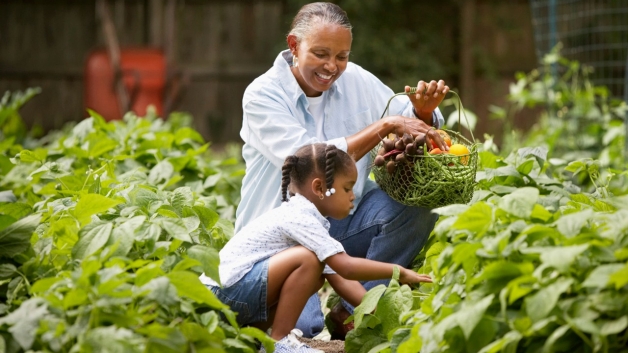
It’s especially important to avoid using chemical fertilizers and pesticides if you’re growing fruits and vegetables in your garden.
Consider adding a vegetable garden, even if you only grow one or two crops. Growing sustainable produce at home reduces the amount of commercial and imported produce transported to our local warehouses and stores using fossil fuels. Your tomatoes, squashes, and carrots only go from your garden to your table. Add herbs and berries too. You can also grow your own floral bouquets instead of buying commercial flowers. When you buy out-of-season flowers from countries like Chile and Ecuador, they are one of the single most fossil fuel-intensive items you can buy. It takes a lot of fuel to get them to your home. Not so pretty when you think about it.
Lose the Lawn
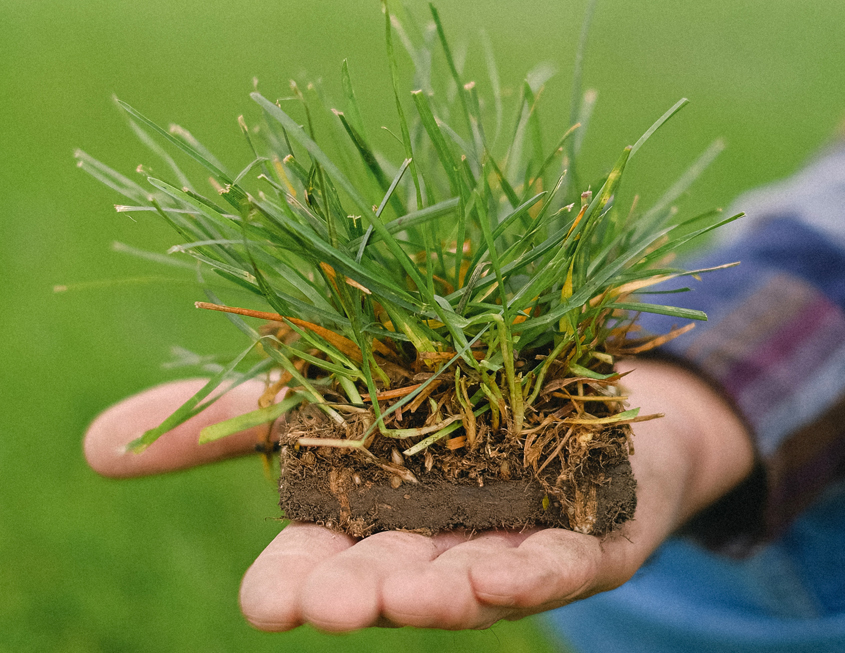
You can save water and lots of time and energy by removing turf from your landscaping. Photo: Anna Shvets/Pexels
Most of us know lawns are thirsty plants using a lot of water, which can be expensive in drought-prone areas like San Diego County. Speaking of fuel-intensive, are you mowing your lawn with a gas-powered mower? You’re burning fossil fuels and polluting the atmosphere. You’re also creating noise pollution. If you insist on growing some lawn, try a battery power mower or even better an old-school push lawn mower and get some bonus exercise!
But if a lawn is too time-consuming and expensive, ditch it. Grow native plants, grasses, ground covers, and create a beautiful, waterwise yard friendly to pollinators like bees, butterflies, and hummingbirds. Many of San Diego County’s water agencies hold a Landscape Makeover Contest every year. Why not makeover your yard and get a little recognition and a prize? This year’s contest deadline is May 14, but you always start work for next year.
It’s easy to get depressed about scary climate change headlines. Use Earth Day to inspire you to fight back in your own small way through gardening and good practices. Nature is therapeutic for you and Mother Earth at the same time. Happy Earth Day from the Eco-Warriors at Good Earth Plant Company! Help us enrich peoples’ lives with plants, including yours!

